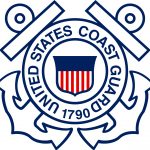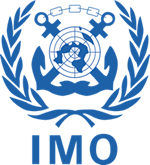What is MMSI
What is GMDSS
ONE VESSEL-ONE MMSI NUMBER
MMSI NUMBER AND AIS TRANSPONDERS
FAQs
Useful Links:
obtain an MMSI number for a vessel
obtain an MMSI number for a handheld marine VHF radio
which MMSI number do I need?
What is MMSI
An MMSI number is a unique identifier assigned to a vessel. One MMSI number is assigned for all applicable VHF electronics on the vessel, such as:
- AIS transponder
- DSC (Digital Selective Calling) Radio
- EPIRB (Emergency Position Indicating Repeater Beacon)
- AIS MOB (Man Over Board)
MMSI registration includes contact information to be used in case of an emergency.
All vessels operating on the high seas require a Maritime Mobile Service Identity number to participate in the Global Maritime Distress & Safety System (GMDSS). In addition to GMDSS participation, the MMSI number serves as a unique identifier for all VHF communications.
 The International Telecommunications Union (ITU) sets the international conventions for the use of MMSI numbers. An MMSI number is a 9-digit code issued by the host country agency for use in VHF marine radio equipment. By international agreement, the ITU sets the rules that determine how MMSI numbers are assigned and used. In the United States and Canada, the Federal Communications Commission (FCC) and Industry Canada (IC) are respectively responsible for assigning an MMSI number to commercial and recreational vessels. (See MMSI and AIS Transponders for more.)
The International Telecommunications Union (ITU) sets the international conventions for the use of MMSI numbers. An MMSI number is a 9-digit code issued by the host country agency for use in VHF marine radio equipment. By international agreement, the ITU sets the rules that determine how MMSI numbers are assigned and used. In the United States and Canada, the Federal Communications Commission (FCC) and Industry Canada (IC) are respectively responsible for assigning an MMSI number to commercial and recreational vessels. (See MMSI and AIS Transponders for more.)
 Further detail on the format for US MMSI numbers can be found on the USCG website.
Further detail on the format for US MMSI numbers can be found on the USCG website.
What is GMDSS
 Global Maritime Distress & Safety System (GMDSS) was developed by the United Nations agency, the International Maritime Organization (IMO), as the internationally accepted system of coordinated VHF radio communications (ship-to-ship and ship-to-shore) using satellite and terrestrial networks for commercial vessels.
Global Maritime Distress & Safety System (GMDSS) was developed by the United Nations agency, the International Maritime Organization (IMO), as the internationally accepted system of coordinated VHF radio communications (ship-to-ship and ship-to-shore) using satellite and terrestrial networks for commercial vessels.
The GMDSS consists of several systems. The GMDSS radio carriage requirements depend upon the ship’s area of operation, rather than its tonnage. The system also provides redundant means of distress alerting, and emergency sources of power. Recreational vessels are not required to carry GMDSS equipment. However, it is highly recommended for vessels traveling internationally, or more than 25 nm offshore. All vessels are strongly encouraged to apply for an MMSI number to allow the use of Digital Selective Calling (DSC) in the case of an emergency.
Automatic Identification System (AIS) has become an important element of the GMDSS monitoring system because of its ability to provide immediate and accurate contact between vessels. The AIS uses the same MMSI number assigned to the vessel for GMDSS purposes, enabling coordinated communication. The system is backwards compatible with DSC, allowing shore-based GMDSS systems to affordably identify and track marine traffic equipped with AIS transponders.
ONE VESSEL – ONE MMSI NUMBER
Each MMSI number provides a unique vessel identifier for marine traffic monitoring and identification systems. This facilitates VHF communications, emergency response, customs and border security, and even commercial call tracking and billing.
Unlike shore based phone systems, the MMSI number is not synonymous with a “phone number” because it is attached to a vessel and not an individual. Vessels equipped with DSC can make direct bridge-to-bridge calls using MMSI “Vessel-to-Vessel” features. Further, vessels equipped with an AIS transponder can rapidly identify and be identified via this unique MMSI number on any radar, chart plotter or ECDIS (electronic chart display information system) display.
All VHF equipment on a specific vessel must display that vessel’s one identifying MMSI number. In some fleet circumstances vessels can share an MMSI number, but this is only done when the vessels operate in conjunction with one another such as tug and tow. AIS facilitates monitoring of one vessel by another, or by a properly equipped shore station agency, such as the Coast Guard, to pinpoint the exact location of marine traffic in distress.
Which MMSI do I need?
An MMSI number is assigned to a vessel, not a vessel owner. Only one MMSI number is needed per boat, regardless of the number of different communications devices on board.
If you are operating a marine VHF radio which utilizes and MMSI number but will not be associated with a specific vessel, be sure to register accordingly.
MMSI numbers assigned to handheld radios have different registration fields and numbering characteristics than those assigned to vessels, so please be sure that you select the right MMSI number for your use.
 In the U.S., the FCC and Coast Guard maintain a database of MMSI numbers that contains details on each vessel, its owner, and homeport. The information should be updated bi-annually. Commercial vessels are entered in this database when they apply for a radio station license, or apply for an amendment. Domestic users (non-commercial) who do not travel outside of the US waters can be issued an MMSI number without applying for a Ship Station License.
In the U.S., the FCC and Coast Guard maintain a database of MMSI numbers that contains details on each vessel, its owner, and homeport. The information should be updated bi-annually. Commercial vessels are entered in this database when they apply for a radio station license, or apply for an amendment. Domestic users (non-commercial) who do not travel outside of the US waters can be issued an MMSI number without applying for a Ship Station License.
Shine Micro is an authorized issuer of Domestic MMSI numbers. You can purchase an MMSI number through the Shine Micro webstore.
MMSI and AIS TRANSPONDERS
Prior to delivery to the end-user, each AIS Class B transponder is programmed with the MMSI number assigned to the vessel on which it will be installed. The MMSI number must be accurately programmed and updated as necessary in each device in which it is used. The vessel MMSI number is automatically transmit once every 30 seconds along with a basic ship position report. The ship position information can be seen by the VTS, Commercial vessel operators, the Coast Guard, and other marine traffic operating AIS equipment.
Commercial vessel operators, and others using licensed VHF radio equipment, will obtain their MMSI number directly from the FCC. US Recreational users who remain in US waters and only carry VHF, EPIRB and Radar are not required to be licensed. However, they may wish to obtain an MMSI number for use with a VHF DSC radio, EPIRB or Class B AIS Transponder.
Shine Micro is an authorized issuer of Domestic MMSI numbers.
You can purchase an MMSI number through the Shine Micro webstore.
Frequently Asked Questions about MMSI numbers for an AIS system:
1. What vessels are required to obtain an MMSI number?
Answer: Only those vessels on international voyages or US flag commercial vessels greater than 65 feet* are currently required to carry an AIS transponder.
*that are not carrying passengers or engaged in fishing
The specific carriage requirements for US vessels are specified in title 33 CFR 164.46. Each country has slightly different carriage requirements; consult your individual Coast Guard carriage requirements prior to making an AIS purchase.
2. Do Yacht tenders require a separate MMSI number?
Answer: No, the yacht’s tender or life raft should carry the same MMSI number as the parent vessel; unless the craft is not normally fitted aboard or in davits.
3. What do each of the 9 digits in an MMSI number mean?
Answer: Each of the groups of digits within the number has unique meanings that vary slightly by country. Further detail on the format of a US MMSI number can be found on the USCG website.

